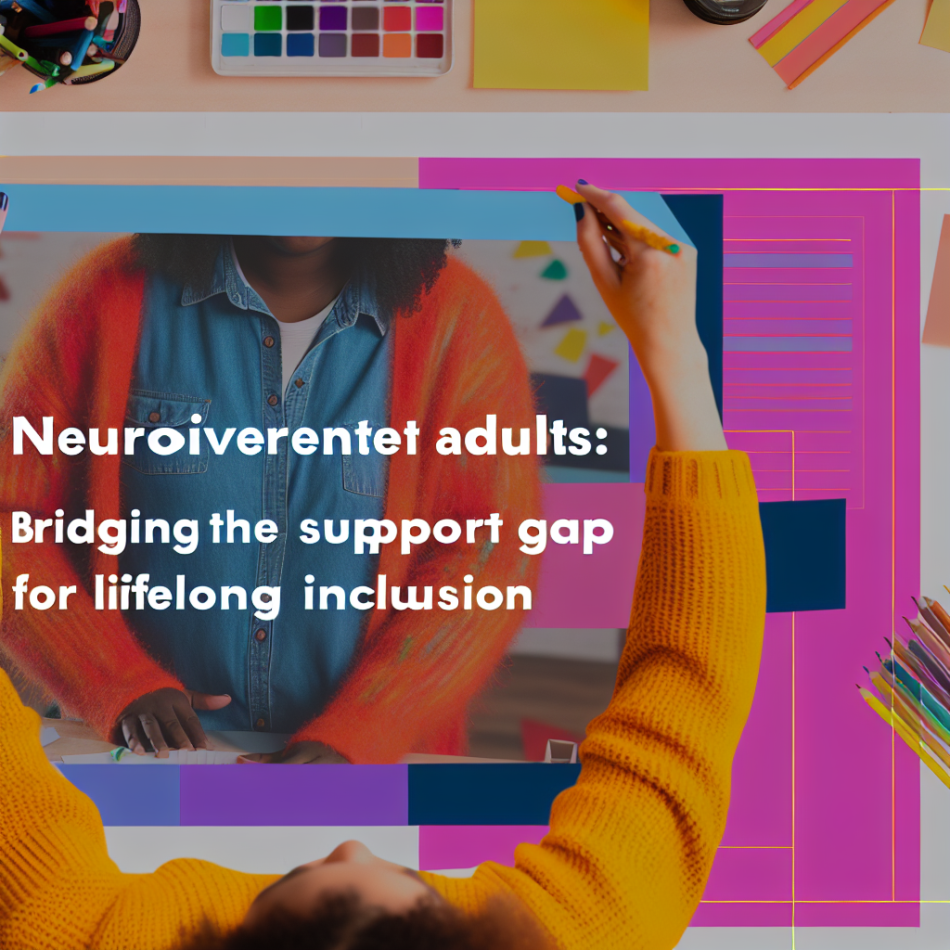Neurodivergent Kids Grow Into Neurodivergent Adults: Addressing the Transition Gap in Support Systems
Neurodivergent children, whether autistic, ADHD, dyslexic, or otherwise, inevitably grow up – yet many support systems vanish once they turn 18. This abrupt withdrawal of resources creates a transition gap, leaving adults navigating a world ill-equipped to meet their needs. This article explores why this gap persists, its consequences, and how society can foster lifelong support structures that empower neurodivergent individuals to thrive.
Understanding Neurodiversity Beyond Childhood
Neurodiversity encompasses a range of neurological differences, including autism, ADHD, dyslexia, and Tourette’s syndrome. While these conditions are lifelong, interventions often focus on children: speech therapy, educational accommodations, or behavioural support. Society frames neurodivergence as a childhood issue, perpetuating the myth that individuals will “grow out of it” or adapt seamlessly to adulthood. This misconception ignores the evolving challenges neurodivergent adults face, such as employment discrimination, mental health struggles, and social isolation.
The Cliff Edge at 18: Why Support Systems Disappear
In many countries, legal adulthood at 18 triggers a sharp reduction in services. Educational systems, paediatric healthcare, and parental advocacy networks – which often act as lifelines – are replaced by fragmented adult services. For example, the UK’s Children and Families Act 2014 guarantees support until 25 for those in education, but this excludes those entering work or unable to study. Adult social care, meanwhile, is means-tested and prioritises critical needs over developmental support. The result? Many fall through the cracks, struggling to access diagnosis, therapy, or workplace adjustments.
Barriers to Thriving in Adulthood
Neurodivergent adults encounter systemic hurdles that compound the transition gap:
- Employment disparities: Only 22% of autistic adults in the UK are employed, often due to rigid hiring practices or lack of workplace adjustments.
- Healthcare inequity: Mental health services frequently lack training in neurodiversity, leading to misdiagnosis or inadequate care.
- Housing instability: Sensory sensitivities or executive functioning challenges make independent living difficult, yet supported housing options are scarce.
- Social exclusion: Without structured environments like schools, building community becomes harder, exacerbating loneliness.
The Role of Societal Misconceptions
The transition gap is reinforced by societal biases. Neurodivergent adults are often infantilised or perceived as “less capable”, despite their potential. Media narratives focus on children, sidelining adult experiences. Additionally, the medical model of disability – framing neurodivergence as a problem to “fix” – overshadows the social model, which emphasises removing systemic barriers. This stigma discourages adults from seeking help, fearing judgment or invalidation.
Building Bridges: Strategies for Lifelong Support
Closing the transition gap requires systemic change. Key strategies include:
- Integrated transition planning: Start preparing neurodivergent youth at 14 for adulthood, covering career planning, independent living skills, and healthcare navigation.
- Workplace inclusivity: Employers should adopt neurodiversity hiring programmes, flexible schedules, and sensory-friendly environments.
- Adult-focused services: Expand access to diagnosis, counselling, and peer support groups tailored to adults.
- Community partnerships: Collaborate with universities, employers, and charities to create mentorship networks and social hubs.
Policy Reform and Advocacy: A Collective Responsibility
Governments must prioritise neurodivergent adults in policy. For instance, extending education protections to all adults, funding adult autism/ADHD assessments, and mandating workplace accommodations. Advocacy groups, meanwhile, play a vital role in amplifying adult voices – campaigns like #NothingAboutUsWithoutUs highlight the need for co-designed solutions. Families and allies can push for local services, while individuals sharing their stories challenge stereotypes.
Conclusion: Bridging the Gap for a Neuroinclusive Future
Neurodivergent children grow up, but society’s support often doesn’t. The transition gap leaves countless adults stranded, their potential untapped due to systemic neglect. Addressing this requires dismantling misconceptions, reforming policies, and fostering inclusive communities. By recognising neurodiversity as a lifelong identity – not a childhood phase – we can build a world where every individual, regardless of age, has the tools to thrive. The time to act is now: continuity of care isn’t a luxury, but a right.
